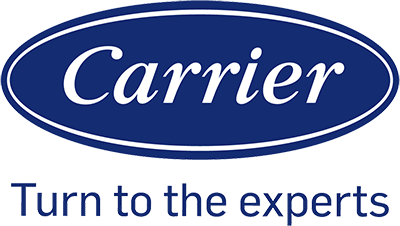Understanding Air Handlers

Air handlers are the lungs of an HVAC system, responsible for the regulation and circulation of air within the system. We’ll explore their essential components, operation, and the various types and sizes available to fit different HVAC needs.
Components and Operation
The core components of air handlers can include blower fans, coils, and filter racks, each playing a pivotal role in the HVAC system. We typically find the blower fan tasked with moving air through the ductwork. This fan ensures air is drawn across the evaporator coils or heat exchanger, where temperature regulation occurs. The coils can either cool the air as it passes over the evaporator coil or heat it using the heat exchanger, depending on the system.
Air handlers also house filter racks that hold the air filters. These filters are crucial as they trap dust, allergens, and other airborne particles, ensuring that the air distributed throughout the building is clean.
| Component | Function |
|---|---|
| Blower Fan | Circulates air through the system |
| Coils | Regulate air temperature (cooling or heating) |
| Filter Racks | Hold air filters to clean the circulating air |
| Air Filter | Removes particulates from the air |
Types and Sizes
Air handlers come in various types and sizes to suit different environments. Residential systems may have a single, smaller unit, while commercial settings could require larger and more complex configurations.
The type of air handler is often classified by how it interacts with the other parts of an HVAC system. For example, some might work with a centralized air filter, while others have their own built-in filters. Size selection depends on factors such as the size of the space, the volume of air to be circulated, and the capacity of the HVAC system to condition the air.
- Residential Air Handlers
- Small to medium in size
- Often integrate with an existing HVAC system
- Commercial Air Handlers
- Larger and more robust
- Designed to handle larger volumes of air.
Each HVAC system component, including the air handler, must be chosen carefully to ensure efficient operation, optimal air quality, and temperature control.
Performance and Efficiency

In this section, we’ll explore how energy efficiency measures and maintaining optimal performance are crucial for the operation of air handlers within HVAC systems. Our focus will be on specific strategies to lower energy consumption while ensuring consistent performance.
Energy Efficiency Measures
Air handlers are integral to managing energy consumption in HVAC systems. We prioritize the use of variable speed motors which allow air handlers to adjust airflow based on demand, significantly reducing energy use. To quantify energy efficiency, we look at the Seasonal Energy Efficiency Ratio (SEER), a critical metric that rates air conditioner and heat pump cooling efficiency.
Key Energy Efficiency Measures:
- Installation of high-efficiency filters to reduce energy waste.
- Integration of energy recovery systems that capture energy from exhaust air.
- Use of motors with higher SEER ratings for better energy savings over time.
Maintaining Optimal Performance
Ensuring that our air handlers maintain their performance over time involves regular maintenance and monitoring. Optimizing performance not only pertains to energy efficiency but also includes maintaining indoor air quality and proper humidity control.
Strategies for Maintaining Performance:
- Conducting regular cleaning and maintenance of components to prevent airflow obstruction.
- Calibration of controls to respond adequately to varying conditions.
- Regularly replacing filters and checking for duct leaks to maintain proper indoor air quality.
Through these specific actions, we ensure our air handlers operate at peak efficiency, providing comfortable indoor environments while keeping energy consumption in check.
Air Quality and Comfort

In HVAC systems, we ensure air quality and comfort by controlling various parameters. Let’s explore how air handlers contribute to enhancing indoor air quality and regulating temperature and humidity.
Indoor Air Quality Enhancements
Our air handlers are equipped with filters that play a pivotal role in maintaining high indoor air quality. The filtration process removes particulates and allergens from the air, ensuring that the conditioned air we breathe is clean and healthy. For example:
- HEPA Filters: Capture 99.97% of particulates 0.3 microns or larger.
- Activated Carbon Filters: Absorb odors and volatile organic compounds (VOCs).
Furthermore, air handlers contribute to proper ventilation, which is essential for replenishing the indoor environment with fresh outdoor air. This ventilation helps dilute and remove contaminants, augmenting the overall air quality.
Temperature and Humidity Regulation
Maintaining a comfortable temperature and appropriate humidity levels is crucial. Our air handlers provide:
- Cooling: Through the use of chilled water coils or refrigerants, the air handler cools the air, ensuring a comfortable environment during warmer months.
- Heating: In cooler months, hot water or steam coils, or electric heating elements within the air handler warm the air to maintain a suitable indoor temperature.
Regulating humidity is equally important:
- Humidity Control: By passing the air over cooling coils, our handlers can condense moisture, effectively reducing high humidity through dehumidification.
- Maintaining Ideal Humidity: It’s ideal to maintain indoor humidity levels between 30-50%, where our systems ensure the air is neither too dry nor too humid.
By balancing these elements, our air handlers ensure a consistently comfortable and healthy indoor atmosphere.
System Design and Maintenance

In designing and maintaining air handlers as part of an HVAC system, we prioritize seamless integration and diligent maintenance for optimal performance and longevity.
Integration With HVAC Systems
We carefully design air handlers to work efficiently with the entire HVAC system, ensuring each component, from ductwork to heat pumps, operates harmoniously. In our design process, we size the furnace and air handler correctly to match the heat load calculations, which prevents energy waste and improves comfort. An improperly sized system can lead to numerous problems, such as shortened equipment life due to cycling on and off too frequently. We integrate heat pumps with air handlers to allow for both heating and cooling. This duality must be meticulously managed to ensure seamless operation throughout the year.
- Ductwork: Essential for directing airflow, we ensure it is properly sealed and insulated.
- Filters: Strategically placed, they must be accessible for regular maintenance.
Routine Maintenance and Repairs
Consistent maintenance is key to air handler longevity and efficiency. We emphasize a regimen of regular maintenance, including filter replacement and inspection of all moving parts. This approach not only prolongs the life of the system but also prevents costly repairs and maintains air quality.
- Inspections: Performed by a professional HVAC technician to spot potential issues early.
- Repairs: We address them promptly to keep the system running without interruption.
By adhering to rigorous maintenance schedules, we ensure that every component of the HVAC system, including the air handlers, works in concert to provide a controlled and comfortable indoor environment.
Advanced Topics in Air Handling
In this section, we explore the latest advancements in air handler units (AHUs) and how modern zoning and air distribution strategies enhance HVAC system efficiency.
Innovations in Air Handler Technology
The current landscape of air handling technology showcases significant innovation aimed at improving the performance of AHUs within HVAC systems. One notable advancement is the integration of smart controls that optimize energy use and adapt operation to changing conditions. We also see the use of variable frequency drives (VFDs), which allow the air handlers to adjust their motor speed based on demand, thereby reducing electricity consumption and maintaining optimal humidity levels.
- Variable Frequency Drives (VFDs)
- Improves motor speed control
- Reduces energy consumption
- Maintains optimal humidity levels
Additionally, energy recovery devices have been incorporated to reclaim waste energy from exhaust air and use it to precondition incoming fresh air. This approach not only helps in reducing the overall energy load of the system but also manages humidity levels more effectively by pretempering the incoming air.
- Energy Recovery Devices
- Reclaims waste energy
- Preconditions incoming air
- Manages humidity levels and reduces energy load
Zoning and Air Distribution Strategies
Our understanding of zoning within the context of HVAC systems has evolved to encompass advanced air distribution strategies. Through the use of zoning, we can tailor the heating and cooling needs of different areas within a building, ensuring that each zone maintains its desired comfort level without unnecessary energy expenditure.
- Zoning Strategies
- Tailors heating and cooling to specific areas
- Enhances comfort levels
- Optimizes system capacity and energy use
One strategy incorporates demand-controlled ventilation (DCV), which uses sensors to determine the occupancy of a zone and adjusts the airflow accordingly, thus distributing air more effectively and efficiently across different areas.
- Demand-Controlled Ventilation (DCV)
- Uses occupancy sensors
- Adjusts airflow based on zone demand
- Enhances air distribution efficiency
Another strategy is the implementation of thermal displacement ventilation (TDV), which delivers air at a lower velocity through diffusers located at floor level, improving the distribution and quality of air while maintaining energy-efficiency and capacity controls within the HVAC system.
- Thermal Displacement Ventilation (TDV)
- Delivers air at lower velocity
- Utilizes floor level diffusers
- Improves air quality and distribution
By integrating these innovative technologies and strategies into our air handling practices, we significantly elevate the capacity and efficiency of modern HVAC systems.




